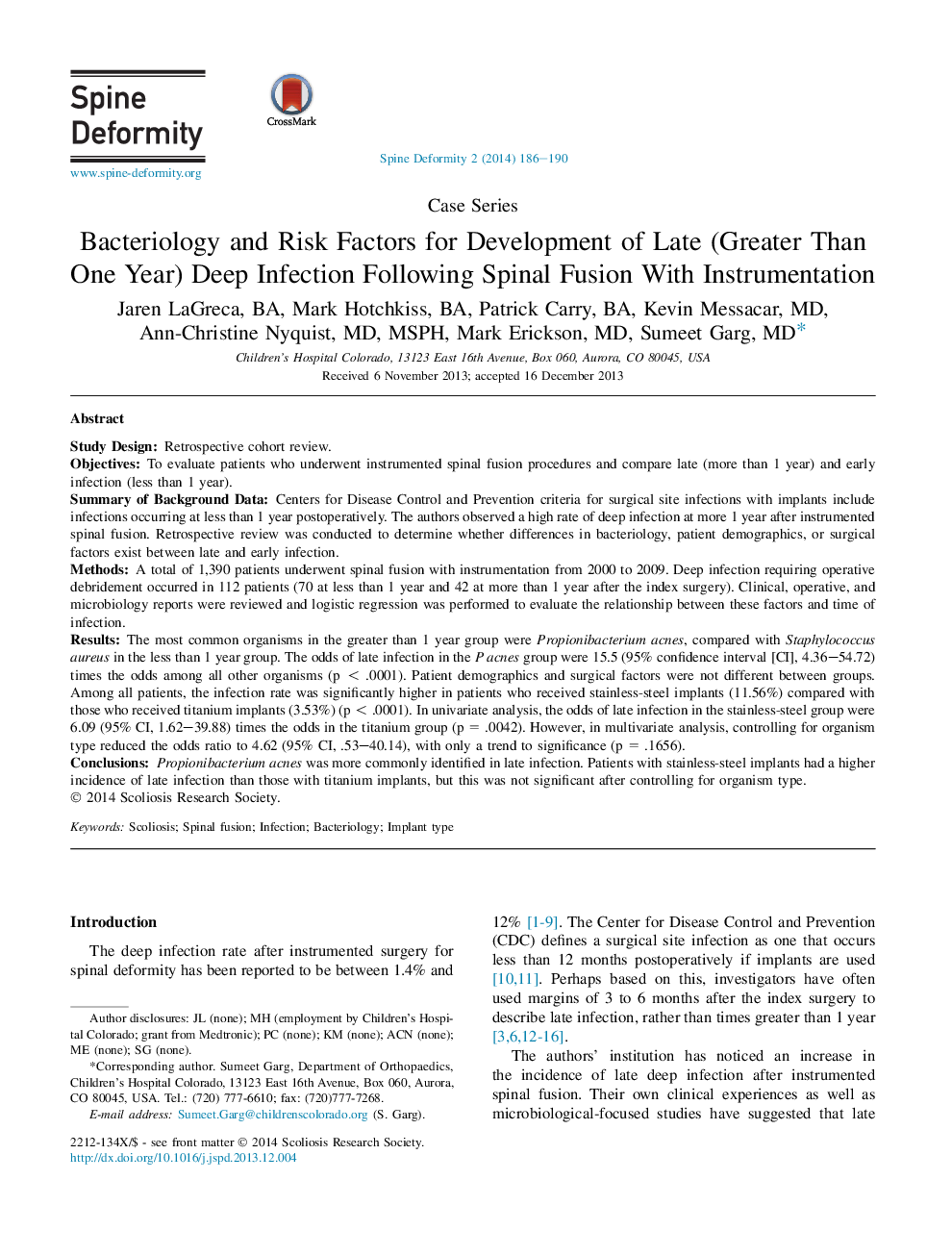| Article ID | Journal | Published Year | Pages | File Type |
|---|---|---|---|---|
| 4095670 | Spine Deformity | 2014 | 5 Pages |
Study DesignRetrospective cohort review.ObjectivesTo evaluate patients who underwent instrumented spinal fusion procedures and compare late (more than 1 year) and early infection (less than 1 year).Summary of Background DataCenters for Disease Control and Prevention criteria for surgical site infections with implants include infections occurring at less than 1 year postoperatively. The authors observed a high rate of deep infection at more 1 year after instrumented spinal fusion. Retrospective review was conducted to determine whether differences in bacteriology, patient demographics, or surgical factors exist between late and early infection.MethodsA total of 1,390 patients underwent spinal fusion with instrumentation from 2000 to 2009. Deep infection requiring operative debridement occurred in 112 patients (70 at less than 1 year and 42 at more than 1 year after the index surgery). Clinical, operative, and microbiology reports were reviewed and logistic regression was performed to evaluate the relationship between these factors and time of infection.ResultsThe most common organisms in the greater than 1 year group were Propionibacterium acnes, compared with Staphylococcus aureus in the less than 1 year group. The odds of late infection in the P acnes group were 15.5 (95% confidence interval [CI], 4.36–54.72) times the odds among all other organisms (p < .0001). Patient demographics and surgical factors were not different between groups. Among all patients, the infection rate was significantly higher in patients who received stainless-steel implants (11.56%) compared with those who received titanium implants (3.53%) (p < .0001). In univariate analysis, the odds of late infection in the stainless-steel group were 6.09 (95% CI, 1.62–39.88) times the odds in the titanium group (p = .0042). However, in multivariate analysis, controlling for organism type reduced the odds ratio to 4.62 (95% CI, .53–40.14), with only a trend to significance (p = .1656).ConclusionsPropionibacterium acnes was more commonly identified in late infection. Patients with stainless-steel implants had a higher incidence of late infection than those with titanium implants, but this was not significant after controlling for organism type.
